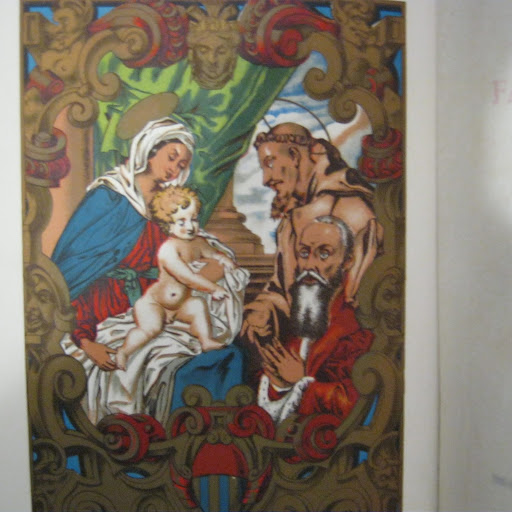Timothy B Perkins
age ~62
from New Ellenton, SC
- Also known as:
-
- Timothy Brian Perkins
- Tim B Perkins
- Ti M Perkins
- Carole Perkins
- Tim Perez
Timothy Perkins Phones & Addresses
- New Ellenton, SC
- Montmorenci, SC
- 832 Wire Rd, Aiken, SC 29805
- Fredericksburg, IA
- Zeeland, MI
- Sullivan, OH
Resumes

Timothy Perkins
view sourceLocation:
New Ellenton, SC
Industry:
Transportation/Trucking/Railroad
Work:
J S Helwig
Transportation
Transportation

Timothy Perkins
view source
Timothy Perkins
view source
Timothy Perkins
view source
Timothy Perkins
view source
Timothy Perkins
view source
Timothy Perkins
view source
Application Developer At Qualex Consulting Services
view sourceLocation:
United States
Industry:
Computer Software
Medicine Doctors

Timothy A. Perkins
view sourceSpecialties:
Psychologist
Work:
Cornerstone Clinical Services PCCornerstone Clinical Services
6400 SE Lk Rd STE 325, Portland, OR 97222
5037861711 (phone), 5037869919 (fax)
6400 SE Lk Rd STE 325, Portland, OR 97222
5037861711 (phone), 5037869919 (fax)
Procedures:
Psychological and Neuropsychological Tests
Languages:
English
Description:
Dr. Perkins works in Milwaukie, OR and specializes in Psychologist.

Timothy M Perkins
view sourceUs Patents
-
Mirror Assembly For Vehicle
view source -
US Patent:8508831, Aug 13, 2013
-
Filed:Apr 22, 2010
-
Appl. No.:13/265613
-
Inventors:Darryl P. De Wind - West Olive MI, US
Michael J. Baur - Holland MI, US
Timothy G. Perkins - Ada MI, US -
Assignee:Magna Mirrors of America, Inc. - Holland MI
-
International Classification:G02F 1/153
G02F 1/03 -
US Classification:359267, 359265, 359245, 359871, 3408154, 3404255
-
Abstract:A vehicular rearview mirror assembly includes a mirror casing, a reflective element and a mounting assembly for adjustably mounting the mirror assembly at a portion of the equipped vehicle. The reflective element has a front surface and a rear surface and a perimeter edge about its periphery and extending between the front and rear surfaces. The front surface generally faces a driver of the vehicle when the mirror assembly is normally mounted in the equipped vehicle. The rear surface of the reflective element may be attached to an attachment surface of an attachment plate or of the mirror casing to secure the reflective element relative to the mirror casing. The perimeter edge of the reflective element may be exposed and viewable by the driver of the vehicle when the reflective element is attached to the attachment surface and when the mirror assembly is normally mounted in the equipped vehicle.
-
Mirror Assembly For Vehicle
view source -
US Patent:20130321940, Dec 5, 2013
-
Filed:Aug 12, 2013
-
Appl. No.:13/964136
-
Inventors:Michael J. Baur - Holland MI, US
Timothy G. Perkins - Ada MI, US -
Assignee:MAGNA MIRRORS OF AMERICA, INC. - Holland MI
-
International Classification:B60R 1/08
B60R 1/04 -
US Classification:359833
-
Abstract:An interior rearview mirror assembly includes a mirror casing and a prismatic reflective element. The mirror casing is a unitarily molded mirror casing having at least one attachment surface. The prismatic reflective element includes a glass substrate having a front surface and a rear surface and a perimeter edge about a periphery of the glass substrate. A mirror reflector is established at the rear surface of the glass substrate. The perimeter edge of said glass substrate has a generally rounded surface disposed between the front surface and the mirror casing. The prismatic reflective element is attached at the attachment surface of the mirror casing. The perimeter edge of the glass substrate is exposed to and is viewable by the driver of the vehicle when the interior rearview mirror assembly is normally mounted in the vehicle.
-
Interior Rearview Mirror Assembly
view source -
US Patent:20140022390, Jan 23, 2014
-
Filed:Oct 14, 2011
-
Appl. No.:13/879481
-
Inventors:Rodney L. Blank - Zeeland MI, US
John T. Uken - Jenison MI, US
Mark L. Larson - Grand Haven MI, US
Darryl P. De Wind - West Olive MI, US
Mark E. Kramer - Zeeland MI, US
Timothy G. Perkins - Ada MI, US -
Assignee:MAGNA MIRRORS OF AMERICA, INC. - Holland MI
-
International Classification:B60R 1/02
-
US Classification:348148, 348837
-
Abstract:An interior rearview mirror assembly for a vehicle includes a mirror reflective element and a video display device operable to display video information that is viewable by a driver of the vehicle through said mirror reflective element and at a display region of said mirror reflective element. The video display device may be operable to display a directional heading at a compass display portion of the display region, and means may be provided to adjust the directional heading display to limit image sticking of the displayed directional heading. The mirror assembly may have a touch zone having at least one touch pad established at a perimeter border band of the reflective element, and may have another touch sensor to detect a touch of a user away from the touch zone to determine when a detected touch at the touch zone is an unintentional touch.
-
Vehicular Interior Rearview Mirror Assembly
view source -
US Patent:20230116278, Apr 13, 2023
-
Filed:Oct 17, 2022
-
Appl. No.:18/046981
-
Inventors:- Holland MI, US
Michael J. Baur - Kentwood MI, US
Timothy G. Perkins - Ada MI, US -
International Classification:B60R 1/04
B60R 1/12
G02F 1/153
G02F 1/157
G02B 7/182
B24B 49/00
B24B 9/02
B24B 13/00
B60R 1/08
B24B 9/08
C03C 17/06 -
Abstract:A vehicular interior rearview mirror assembly includes a mounting structure, a plastic mirror casing, and a mirror reflective element having a glass substrate. The glass substrate includes a periphery surface extending between a planar first surface and a planar second surface and spanning a thickness dimension of the glass substrate. The mirror casing includes a central mounting portion and spaced apart attachment portions. The mirror reflective element is adhesively attached the spaced apart attachment portions. The central mounting portion includes a first pivot element and the mounting structure includes a second pivot element, the first pivot element and the second pivot element forming a pivot joint. The periphery surface of the glass substrate includes a curved outer surface that provides a rounded transition between the planar first surface of the glass substrate and a less-curved outer surface of a side wall of the mirror casing.
-
Method Of Making A Mirror Substrate For A Vehicular Rearview Mirror Assembly
view source -
US Patent:20200254932, Aug 13, 2020
-
Filed:Apr 27, 2020
-
Appl. No.:15/929324
-
Inventors:- Holland MI, US
Michael J. Baur - Kentwood MI, US
Timothy G. Perkins - Ada MI, US -
International Classification:B60R 1/04
B60R 1/12
G02F 1/153
G02F 1/157
G02B 7/182
B24B 49/00
B24B 9/02
B24B 13/00
B60R 1/08
B24B 9/08
C03C 17/06 -
Abstract:A method of making a mirror substrate for a vehicular rearview mirror assembly includes providing a glass substrate having a planar front surface, a planar rear surface and a circumferential perimeter edge. The glass substrate is positioned at a fixture and the front perimeter edge portion of the glass substrate is ground by moving a grinding wheel around the periphery of the glass substrate to establish a rounded surface about and around the periphery of the glass substrate and between the planar front surface and a rear portion of the perimeter edge of the glass substrate. The rounded surface has a radius of curvature of at least 2.5 mm. The rounded surface provides a curved transition between the planar front surface of the glass substrate and the rear portion of the perimeter edge of the glass substrate. The planar rear surface of the glass substrate is coated with a coating.
-
Interior Rearview Mirror Assembly For A Vehicle
view source -
US Patent:20190168672, Jun 6, 2019
-
Filed:Jan 28, 2019
-
Appl. No.:16/258789
-
Inventors:- Holland MI, US
Michael J. Baur - Holland MI, US
Timothy G. Perkins - Ada MI, US -
International Classification:B60R 1/04
G02F 1/157
B60R 1/08
G02B 7/182
B24B 9/08
C03C 17/06
B60R 1/12
B24B 13/00
B24B 49/00
G02F 1/153
B24B 9/02 -
Abstract:A vehicular interior rearview mirror assembly includes a mirror casing and an electro-optic mirror reflective element. The front glass substrate of the reflective element has a planar first surface, a planar second surface and a periphery surface extending therebetween. The mirror casing includes a central mounting element and two spaced apart attachment surfaces. The rear glass substrate of the reflective element is adhesively attached at the attachment surfaces. The central mounting element includes a pivot element that pivotally mounts at a mounting structure. A central cavity exists between the central mounting element and the rear glass substrate. The mirror assembly includes a curved outer surface that provides a rounded transition between the planar first surface of the front glass substrate and a less-curved outer surface of a side all of the mirror casing. No part of the mirror casing encroaches onto the planar first surface of the front glass substrate.
-
Method Of Making A Mirror Substrate For An Interior Rearview Mirror Assembly For A Vehicle
view source -
US Patent:20170043721, Feb 16, 2017
-
Filed:Oct 31, 2016
-
Appl. No.:15/338779
-
Inventors:- Holland MI, US
Michael J. Baur - Holland MI, US
Timothy G. Perkins - Ada MI, US -
International Classification:B60R 1/04
G02F 1/153
C03C 17/06
B24B 13/00
B24B 49/00
B60R 1/08
B24B 9/02 -
Abstract:A method of making a mirror substrate for a vehicular mirror assembly includes providing a glass substrate and fixturing the glass substrate at a fixture to support the glass substrate. A rotatable grinding wheel is presented to the front perimeter portion of the glass substrate and the front perimeter portion of the glass substrate is ground to establish a ground rounded surface about and around the periphery of the glass substrate. After grinding the front perimeter portion of the glass substrate to establish the ground rounded surface, a rotatable polishing wheel is presented to the ground rounded surface and the ground rounded surface is polished to establish a polished rounded surface about and around the periphery of the glass substrate. The polished rounded surface provides a smooth transition between the front surface of the glass substrate and a rear portion of the circumferential perimeter edge of the glass substrate.
-
Method Of Making A Mirror Substrate For An Interior Rearview Mirror Assembly For A Vehicle
view source -
US Patent:20150175074, Jun 25, 2015
-
Filed:Mar 9, 2015
-
Appl. No.:14/641813
-
Inventors:- Holland MI, US
Michael J. Baur - Holland MI, US
Timothy G. Perkins - Ada MI, US -
International Classification:B60R 1/04
C03C 17/06
B24B 9/08
B60R 1/08 -
Abstract:A method of making a mirror substrate for an interior rearview mirror assembly for a vehicle includes providing a glass substrate having a generally planar front surface, a generally planar rear surface and a circumferential perimeter edge about a periphery of said glass substrate and extending between the front and rear surfaces. A grinding wheel is moved around the periphery of a front perimeter portion of the glass substrate while rotating the grinding wheel to establish a ground generally rounded surface about and around the glass substrate periphery. A polishing wheel is moved around the glass substrate periphery while rotating the polishing wheel to establish a polished generally rounded surface about and around the glass substrate periphery. The polished generally rounded surface provides a smooth transition between the generally planar front surface of the glass substrate and a rear portion of the circumferential perimeter edge of the glass substrate.
Name / Title
Company / Classification
Phones & Addresses
PERKINS LAWN MAINTENANCE LLC
INNER CITY HOPE
Incorporator
CLYDE PERKINS
Plaxo

Timothy Perkins
view sourceSoutheastern FloridaInitiate Success LLC affiliated with AutoMax Recru...
Classmates

Warren Christian School, ...
view sourceGraduates:
Timothy Perkins (1997-2001),
Joseph Leenheer (1994-1998),
Jess Villers (2000-2004),
Rebecca Dulka (1990-1994),
Daniel Heeger (1994-1998)
Joseph Leenheer (1994-1998),
Jess Villers (2000-2004),
Rebecca Dulka (1990-1994),
Daniel Heeger (1994-1998)

Bolivar-Richburg High Sch...
view sourceGraduates:
Timothy Perkins (1991-1995),
Sabrena Schoonover (2005-2009),
Jacob Dickerson (1994-1998),
Brooke Steiner (1996-2000),
Chris Chandler (1999-2003)
Sabrena Schoonover (2005-2009),
Jacob Dickerson (1994-1998),
Brooke Steiner (1996-2000),
Chris Chandler (1999-2003)

Woden High School, Nacogd...
view sourceGraduates:
Timothy Perkins (2003-2007),
Tim Rosson (1992-1997)
Tim Rosson (1992-1997)

Christian Heritage Academ...
view sourceGraduates:
Timothy Perkins (1984-1988),
Michelle Hammons (1982-1986),
Cindy Coursey (1989-1993),
Steffani Bullock (1983-1987)
Michelle Hammons (1982-1986),
Cindy Coursey (1989-1993),
Steffani Bullock (1983-1987)

De Quincy High School, De...
view sourceGraduates:
Lindsey Parrish (1994-1998),
Brock Beyeaux (1970-1974),
Timothy Perkins (1986-1990),
Thomas Vanwinkle (1990-1994)
Brock Beyeaux (1970-1974),
Timothy Perkins (1986-1990),
Thomas Vanwinkle (1990-1994)

Crosby Middle School, Mid...
view sourceGraduates:
Timothy Perkins (1989-1991),
Heather Zeckner (1990-1993),
Doug Fralix (1991-1992),
Whitney Kelsey (1999-2001)
Heather Zeckner (1990-1993),
Doug Fralix (1991-1992),
Whitney Kelsey (1999-2001)

Irons Junior High School,...
view sourceGraduates:
Timothy Perkins (1989-1992),
Alicia Mitchell (1989-1991),
Heather Hagood (1997-2000),
Thom Moore (1989-1990),
David Estephanous (1992-1995)
Alicia Mitchell (1989-1991),
Heather Hagood (1997-2000),
Thom Moore (1989-1990),
David Estephanous (1992-1995)

Wells High School, Wells,...
view sourceGraduates:
Timothy Perkins (1991-1995),
Caroline Goodwin (1978-1982),
Nichole Stevens (1999-2003),
Norman Vezeau (1958-1962)
Caroline Goodwin (1978-1982),
Nichole Stevens (1999-2003),
Norman Vezeau (1958-1962)
Youtube
Myspace

Timothy Perkins
view sourceLocality:
Toldeo - Florida-Newyork, New York
Gender:
Male
Birthday:
1950
Googleplus

Timothy Perkins
Work:
Freelance Bass Player
Education:
Lawrence University - Music, University of Central Missouri - Music

Timothy Perkins
Relationship:
In_a_relationship

Timothy Perkins

Timothy Perkins

Timothy Perkins

Timothy Perkins

Timothy Perkins

Timothy Perkins

Mark Anthy Timothy Perkins
view sourceFriends:
Kerry Lynn Cassidy, Salam Al-Marayati, BarbaraAnn Cody Del Valle, Shaheen Farouk

Timothy BallstotheWall Pe...
view source
Timothy S. Perkins Jr.
view sourceFriends:
Doneshia Bridges, Diamond Bling, Canice Gucci, Courtney Bratton, Shubham Sharma

Timothy Perkins
view sourceFriends:
Dch Freehold Toyota, Matt Nazar, Lynch Chrysler Dodge Jeep

Timothy John Perkins
view source
Timothy Perkins
view source
Nigel Timothy Perkins
view sourceFriends:
Paul Lister, Lisa Louise, Nic Barnes, Sarah Mcgrath, Sarah Townsend, Liam Bray

Timothy Perkins
view sourceFlickr
News

Improved technology saves maple syrup producers time, energy
view source- For commercial maple producers, time is money and energy is money. It all comes down to how efficient you can be to make syrup, and this is just the next big step to save time, said Timothy Perkins, director of the University of Vermonts Proctor Maple Research Center.
- Date: Feb 26, 2017
- Category: Business
- Source: Google

Maple syrup production plummets with warm weather, though farms with modern ...
view source- In Vermont, by far the nations leading maple-syrup producer, about three-fourths of farms use vacuum systems, said Timothy Perkins, the director of the University of Vermont Proctor Maple Research Center. He estimated they will make about 60 percent of the syrup they produced last year, while those
- Date: Mar 23, 2012
- Category: Business
- Source: Google

Vt. maple syrup makers try gadget to extend season
view source- Timothy Perkins, director of the University of Vermont's Proctor Maple Research Center, who helped develop it, said almost all those surveyed by UVM after last year's season said they would try it again this year.
- Date: Mar 06, 2011
- Category: Business
- Source: Google
Get Report for Timothy B Perkins from New Ellenton, SC, age ~62













